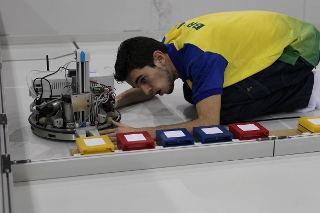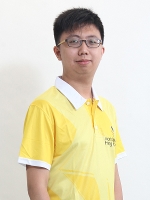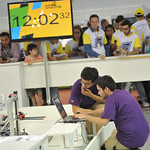Mobile Robotics
Skill Explained
Mobile Robotics is a fast evolving, solutions orientated, industry within which the robotics engineer is a significant and growing work role. Mobile robotics is an important part of the industry, with applications in diverse industries, including manufacturing, agriculture, aerospace, mining, and medicine.
A robotics engineer works in offices, manufacturing plants or laboratories; he or she designs, maintains, develops new applications and conducts research to expand the potential for robots. The role begins with a strong focus on a specific business problem, in a particular sector. For example in manufacturing there may be a need to increase capacity by creating robots for tasks that can be automated. Mobile robots may also be designed to explore areas that are inaccessible or dangerous for human beings.
Careful, deep client consultation is required, resulting in an accurate specification. The design phase follows and a prototype is assembled. The robot is then programmed and tested to ensure high, consistent performance. At the heart of every robot is a robotics engineer who thinks about what a robot needs to do and works with several engineering disciplines to design and put together the optimal piece of equipment, demonstrating a commitment to attention to detail. In this instance the robotics engineer uses existing technologies to create solutions to new challenges. He or she is not creating new (robot) technology.
Robotics engineers must be familiar with logic, microprocessors, and computer programming so that they can design the right robot for each application. They must also prepare specifications for the robot's capabilities as they relate to the work environment. In addition, robotics engineers are responsible for cost efficient design, cost-price calculations and quality-control.
Integral to the role of the high performing robotics engineer are a range of skills related to work organization and self-management. Excellent communication and interpersonal skills, with a particular strength in working well in a team, are equally important. An ability to be innovative and creative in resolving technological challenges and generating solutions is also essential.
Working across sectors internationally and being able to transfer analytical skills is a feature of the excellent robotics engineer, together with a commitment to continuing specialist and professional development and a determination to resolve problems through experimenting and risk taking within self-managed boundaries. In an increasingly global industry, which is ‘breaking new ground’ and altering the way we live and work, there are significant opportunities for sustainable careers in robotics engineering. The opportunities carry with them the need to work with diverse cultures, industries and fast paced technological change. The diversity of skills associated with robotics engineering is therefore likely to expand.
What the Competitors do at the Competition
Competitors will be expected to carry out two tasks over four days of the Competition using the provided robots. The tasks will mainly include the programming of the robots to carry out different sequences in two different arenas. Besides programming, the teams have to test, to adjust sensor values and parameters, assemble and connect peripheral equipment and/or tools and make final test runs. In the case of hardware problems, teams must be able to do troubleshooting and repairs on hardware and connections.
Competitors
Maryam ALZahmi
United Arab Emirates
Iman Arabpour
Iran
Kamal Prasath Balaji M
India
Abdulla Bin Doei
United Arab Emirates
Victor Brandao
Brazil
Nicolas BRIOT
France
Kin Pui Cheng
Hong Kong, China
KIRYL CHEPELEU
Belarus
Steffen Ellerbrake
Germany
Nico Gattmann
Germany
Christoph Hackenberger
Austria
Jun Hasegawa
Japan
David Henáo Mejia
Colombia
Arjan Henst
Netherlands
Naoki Ito
Japan
Su-Mari Jansen van Vuuren
South Africa
Ville-Petteri Joensuu
Finland
ANTON KANASHUK
Belarus
Markus Klein
Austria
Wai Kit Lao
Macao, China
Zachary Larose
Canada
A Ron Lee
Korea
Clément LELONG
France
Chun Chiu Eric Li
Hong Kong, China
YongQiang Lin
Singapore
YU YUN LIU
Chinese Taipei
Dinesh Mangalanathadurai
Singapore
Maxime Marineau
Canada
Lutfi Nur Indrawan
Indonesia
Hong Cheol Park
Korea
Nelson Pereira
Portugal
Hendriana Helda Pratama
Indonesia
Miska Puoskari
Finland
Maksim Shirokov
Russia
Hou Fai Sit
Macao, China
Denis Sobolev
Russia
Chaiporn Somboonchai
Thailand
Artur Sousa
Portugal
Dharmaraj T
India
Mongkol Tepphawan
Thailand
Marnes van der Walt
South Africa
Fer van Maasakkers
Netherlands
Carlos Adriano Vieira
Brazil
Yonnathan Vinasco Valencia
Colombia
PEI-CHIH WU
Chinese Taipei
Ali Zarei
Iran
Experts

Mohammad Al-Shamsi
United Arab Emirates

Eiraj Bakhtiari
Iran

Maxime Collette
France

ANDREI DUNETS
Belarus
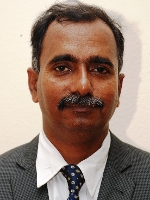
Mahesh Goudar
India

Yuta Imai
Japan

Ulrich Karras
Germany

Chow Toon Keh
Singapore

Yong Sun Kong
Korea

Alexei Kornilov
Russia

Erhard List
Austria

Eric Wing Kuen Lo
Hong Kong, China

Christopher Oliver
South Africa
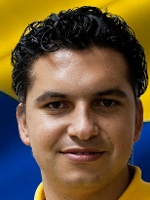
Julio Ricardo Rojas Aldana
Colombia

Keijo Salonen
Finland
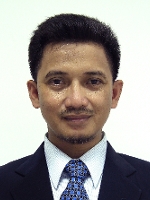
Indra Adji Sulistijono
Indonesia

Jakkarin Thinnakorn
Thailand

Bob Tone
Canada

Tsing Tshih Tsung
Chinese Taipei

Anton van den Brink
Netherlands

Vasco Vaz
Portugal

Paulo Villiger
Brazil

Chi Man Vong
Macao, China
Videos
A New Look at Skills
Autodesk Publisher 3D models*
Download for desktop
Download for mobile
Autodesk Inventor Data Sets**
* Open the 3D models on desktop with Autodesk Inventor Publisher. On mobile download the Autodesk Inventor Publisher Mobile Viewer app (iOS or Android).
** Students and Teachers can download Autodesk Inventor software via the Autodesk Student Community, Educational Institutions via Autodesk Academic Resource Centre (ARC).

